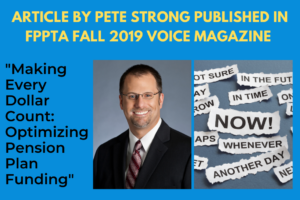Industry News
Print
NCPERS Releases 2019 Public Retirement Systems Study
On January 22, 2020, the National Conference of Public Employee Retirement Systems (NCPERS) released the results of its 2019 NCPERS Public Retirement Systems Study. The comprehensive survey provides information on investment experience, actuarial assumptions, plan administration and operations, trends, innovations and best practices.
The key findings include:
- During 2019, the average funding levels (the value of the assets in the pension plan divided by an actuarial measure of the pension obligation) decreased slightly. Average funding levels declined to 71.7% in 2019 from 72.6% in 2018.
- In 2019, the average investment return assumption was 7.24% compared to 7.34% in 2018. About 82% of responding funds reported that they have reduced their actuarial assumed rate of return or are considering doing so in the future.
- About 51% of reporting funds have implemented or are considering implementing higher age and service benefit requirements, while 46% have increased employee contributions or are considering implementing that change in the future.
- Employer contribution rates remained stable at 22% of payroll in 2019.
- Overall, the reporting funds experienced solid returns, with the 5-year and 10-year average returns being close to or exceeding the assumed rate of return and the 20-year returns outperforming the assumed rate of return. On average, 20-year returns were 11.2%, 10-year returns were 7.7%, 5-year returns were 7.1%, and 1-year returns were 4.5%, significantly lower than 13.4% reported in 2018. Importantly, funds with a December fiscal year-end date experienced 1-year returns that were much lower than those closing at other times.
- Pension funds reduced the cost of administering funds and paying investment managers to 55 basis points (or 55 cents per $100 invested) versus 60 basis points in 2018. This is comparable to the average fee of 55 basis points for equity funds and 66 basis points average for hybrid funds.
- In 2019, about 52% of plan sponsors offered a health plan or subsidy as compared with about 46% who offered a plan in 2018. Of those offering a plan, about 61% of active members are eligible, 82% of retirees are eligible, and 61% of beneficiaries are eligible.
The survey included 155 state and local government pension funds with more than 12.6 million active and retired members and total assets exceeding $1.4 trillion in actuarial and market value. Of the pension funds surveyed, 62% were local government funds and 38% were state pension funds.
The report is available here.

 The Fall 2019 issue of Voice Magazine, a
The Fall 2019 issue of Voice Magazine, a